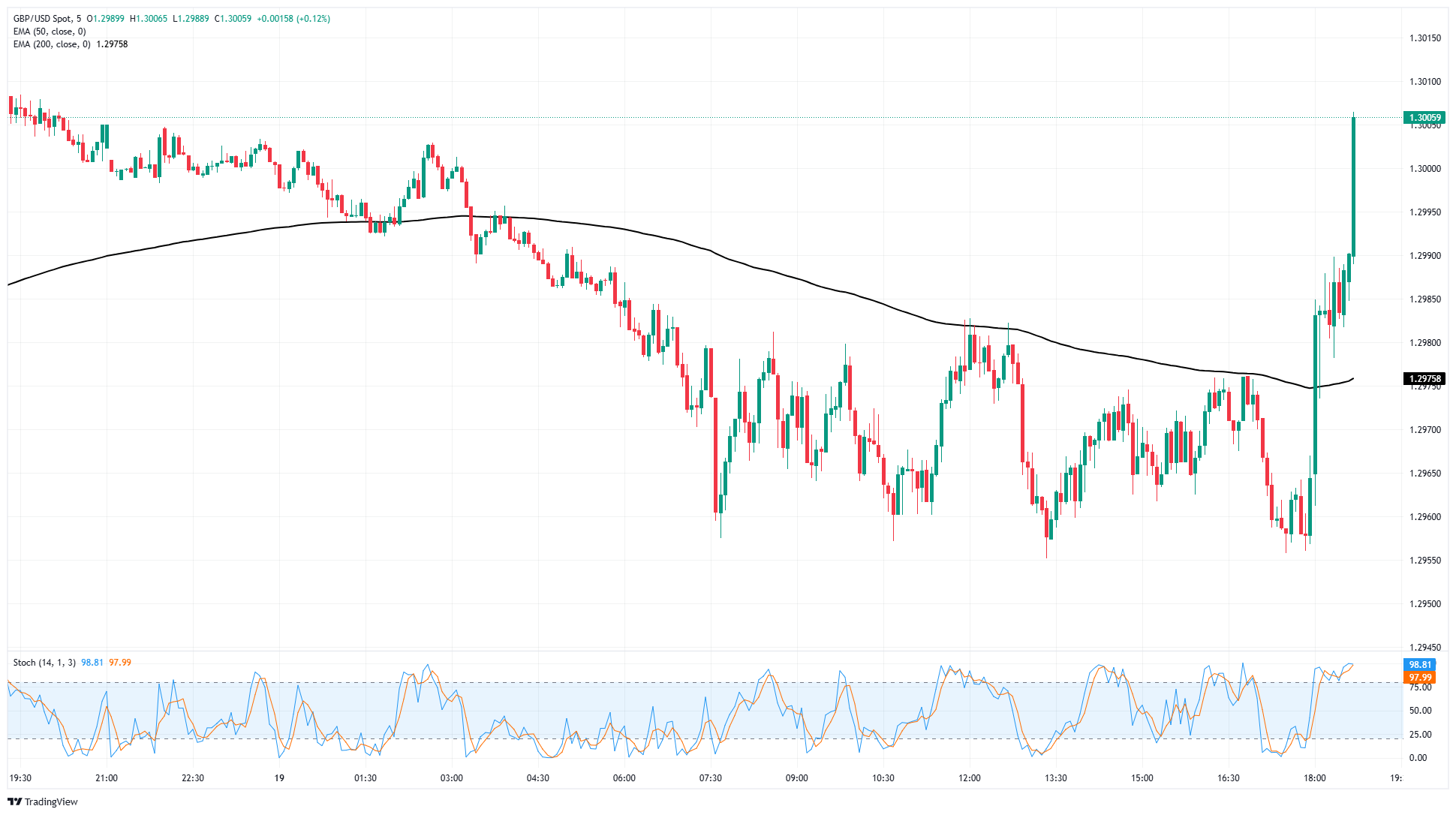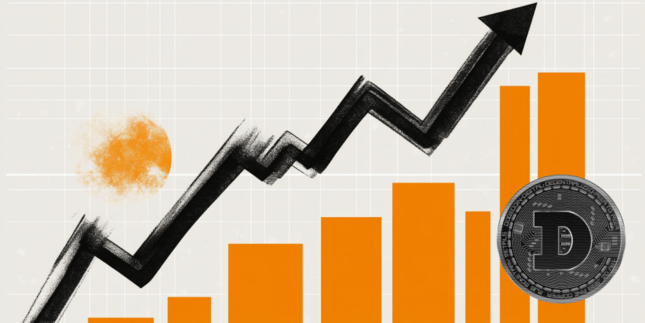- GBP/USD jumped after the Fed scrubs growth projections on policy concerns.
- Fed long-run inflation expectations are stuck at 3.0%, Fed funds rate expectations pinned at 3.9%.
- Rate markets still see odds of a rate cut in June, but hope is dwindling fast.
GBP/USD lurched higher on Wednesday, tapping 1.2985 in intraday trading after the Federal Reserve's (Fed) latest rate call came in broadly as expected, with the Fed keeping rates steady at 4.5%. Markets broadly anticipated another hold from the Fed but are looking for signs that the Fed will continue to deliver rate cuts if the US labor market continues to break down.
According to the Fed, growth expectations for 2025 have been severely hampered by the Trump administration's policy approach of announcing then walking back trade tariffs via social media posts. The Federal Open Market Committee (FOMC) trimmed its end-2025 Gross Domestic Product (GDP) forecast at just 1.7%, down sharply from the 2.1% forecast posted in December.
Fed's Powell: Inflation remains somewhat elevated
The median dot plot of interest rates also sees the end-2025 interest rate stuck at 3.9%, remaining largely unchanged from the previous policy meeting. The FOMC has also decided to slow its balance sheet runoff beginning in April. Rate markets are still pricing in better-than-even odds that the Fed will still deliver a quarter-point rate cut in June, with bets rising above 60% after Federal Reserve Chair Jerome Powell acknowledged that weakening growth and labor figures will be a key point of focus for policymakers.
Not all is rosy in the Fed's universe, however; Fed Chair Powell noted that whipsaw tariff policies from the US could spark further increases in inflation, which poses a significant risk to the Fed's playbook moving forward.
GBP/USD 5-minute chart
Fed FAQs
Monetary policy in the US is shaped by the Federal Reserve (Fed). The Fed has two mandates: to achieve price stability and foster full employment. Its primary tool to achieve these goals is by adjusting interest rates. When prices are rising too quickly and inflation is above the Fed’s 2% target, it raises interest rates, increasing borrowing costs throughout the economy. This results in a stronger US Dollar (USD) as it makes the US a more attractive place for international investors to park their money. When inflation falls below 2% or the Unemployment Rate is too high, the Fed may lower interest rates to encourage borrowing, which weighs on the Greenback.
The Federal Reserve (Fed) holds eight policy meetings a year, where the Federal Open Market Committee (FOMC) assesses economic conditions and makes monetary policy decisions. The FOMC is attended by twelve Fed officials – the seven members of the Board of Governors, the president of the Federal Reserve Bank of New York, and four of the remaining eleven regional Reserve Bank presidents, who serve one-year terms on a rotating basis.
In extreme situations, the Federal Reserve may resort to a policy named Quantitative Easing (QE). QE is the process by which the Fed substantially increases the flow of credit in a stuck financial system. It is a non-standard policy measure used during crises or when inflation is extremely low. It was the Fed’s weapon of choice during the Great Financial Crisis in 2008. It involves the Fed printing more Dollars and using them to buy high grade bonds from financial institutions. QE usually weakens the US Dollar.
Quantitative tightening (QT) is the reverse process of QE, whereby the Federal Reserve stops buying bonds from financial institutions and does not reinvest the principal from the bonds it holds maturing, to purchase new bonds. It is usually positive for the value of the US Dollar.
Information on these pages contains forward-looking statements that involve risks and uncertainties. Markets and instruments profiled on this page are for informational purposes only and should not in any way come across as a recommendation to buy or sell in these assets. You should do your own thorough research before making any investment decisions. FXStreet does not in any way guarantee that this information is free from mistakes, errors, or material misstatements. It also does not guarantee that this information is of a timely nature. Investing in Open Markets involves a great deal of risk, including the loss of all or a portion of your investment, as well as emotional distress. All risks, losses and costs associated with investing, including total loss of principal, are your responsibility. The views and opinions expressed in this article are those of the authors and do not necessarily reflect the official policy or position of FXStreet nor its advertisers. The author will not be held responsible for information that is found at the end of links posted on this page.
If not otherwise explicitly mentioned in the body of the article, at the time of writing, the author has no position in any stock mentioned in this article and no business relationship with any company mentioned. The author has not received compensation for writing this article, other than from FXStreet.
FXStreet and the author do not provide personalized recommendations. The author makes no representations as to the accuracy, completeness, or suitability of this information. FXStreet and the author will not be liable for any errors, omissions or any losses, injuries or damages arising from this information and its display or use. Errors and omissions excepted.
The author and FXStreet are not registered investment advisors and nothing in this article is intended to be investment advice.
Recommended content
Editors’ Picks

EUR/USD bounces off 1.1300 neighborhood; shows resilience below 23.6% Fibo.
EUR/USD drifts lower for the second straight day amid a further USD recovery from a multi-year low. The technical setup favors bulls and warrants caution before positioning for a deeper corrective fall. A sustained break and acceptance below 1.1300 could pave the way for some meaningful decline.

GBP/USD weakens below 1.3300 as US Dollar rises
GBP/USD extended its losses during Wednesday’s Asian session, trading around 1.3300 after pulling back from a seven-month high of 1.3424 recorded in the previous session. The pair weakened as investor appetite shifted back toward US assets, including the US Dollar, buoyed by a more optimistic tone from US President Donald Trump.

Gold price sticks to intraday losses amid positive risk tone; still holds comfortably above $3,300
Gold price moves away from the all-time peak touched on Tuesday amid receding safe-haven demand. Easing US-China tensions remains supportive of the risk-on impulse and weighs on the XAU/USD pair. The downside for the commodity seems limited as the USD bulls seem reluctant amid Fed rate cut bets.

Dogecoin lead double-digit gains across meme coins, with Shiba Inu, PEPE and BONK skyrocketing to new monthly highs
Top meme coins Dogecoin, Shiba Inu, PEPE and BONK lead the meme coin sector with double-digit gains on Wednesday following the crypto market recovery.

Five fundamentals for the week: Traders confront the trade war, important surveys, key Fed speech Premium
Will the US strike a trade deal with Japan? That would be positive progress. However, recent developments are not that positive, and there's only one certainty: headlines will dominate markets. Fresh US economic data is also of interest.

The Best brokers to trade EUR/USD
SPONSORED Discover the top brokers for trading EUR/USD in 2025. Our list features brokers with competitive spreads, fast execution, and powerful platforms. Whether you're a beginner or an expert, find the right partner to navigate the dynamic Forex market.



